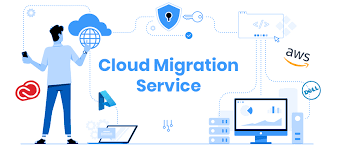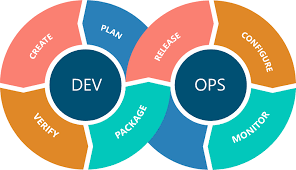What are the key steps of migration to AWS?

Introduction:
In the rapidly evolving technological landscape, businesses constantly seek ways to improve efficiency, cut costs, and increase scalability. One of the most prominent methods for achieving these goals is migrating to cloud-based platforms like Amazon Web Services (AWS). AWS migration requires proper planning and execution to ensure a smooth shift. This guide will delve into the steps of migration to AWS while offering valuable insights that can empower you during this journey with confidence.
About AWS
In 2006, Amazon.com introduced a platform called Amazon Web Services (AWS), which later became an asset of cloud computing. AWS offers a wide range of services like computing, storage, databases, networking, machine learning, security, analytics, IoT, and DevOps. One of the key advantages of AWS is its pay-per-use model, which means you only pay for the resources you consume. This flexible pricing structure provides scalability, reliability, and security without the constraints of physical infrastructure, making it the ideal choice for organizations worldwide seeking to elevate their presence in the cloud arena.
The steps for migration to AWS are as follows:
The First Step of Migration to AWS is Understanding Your Current Setup
Before embarking on the migration journey, developing a comprehensive grasp of your current infrastructure is crucial. Dedicate enough time to evaluating your applications, databases, storage setups, and network configurations. Be diligent in pinpointing any interdependencies, performance bottlenecks, or security vulnerabilities that could potentially influence your migration approach.
Defining Your Objectives and Priorities
Establishing definite objectives and priorities for your migration process is crucial, as it is one of the important steps of migration to AWS. Are you aiming to cut expenses, enhance scalability, fortify security, or foster innovation? By specifying your goals from the outset, you’ll find yourself better equipped to navigate decisions and task prioritization during the migration journey.
Choosing the Right Migration Approach
There are several AWS cloud migration strategies customized for multiple situations to make the process easy. These encompass rehosting (also known as lift and shift), re-platforming, refactoring, repurchasing, and retiring. Assess each alternative, considering factors like intricacy, time limitations, financial implications, and alignment with your current infrastructure.
Creating a Detailed Migration Plan
Craft a comprehensive migration strategy encompassing a detailed outlined timeline, resource allocation, milestone identification, and task delineation for every stage of the migration process. Take into account variables like data transfer modalities, application interdependencies, testing protocols, and contingency plans for reverting changes. Collaborate closely with stakeholders and ensure optimal utilization of resources to facilitate a smooth migration journey.
Ensuring a Secure Environment
Ensuring the safety and integrity of your data is one of the paramount migration steps for AWS throughout the process. It’s crucial to fortify your infrastructure with robust security protocols that cover areas such as identity management, encryption, network protection, and regulatory compliance. Leveraging tools provided by AWS like Identity and Access Management (IAM), Key Management Service (KMS), and Security Hub can significantly enhance your security framework.
Optimizing Performance and Cost Efficiency
Achieving peak performance and cost-effectiveness in the AWS ecosystem necessitates meticulous fine-tuning. Use tools like Amazon EC2 Auto Scaling, Amazon RDS Performance Insights, and AWS Cost Explorer to fine-tune your resource allocation, track performance indicators, and deploy smart economic strategies such as reserved and spot instances.
Thorough Testing and Validation
Testing and validation are some of the most important steps of migration to AWS to do before transitioning production workloads. It’s imperative to conduct this act to ascertain compatibility, functionality, and performance within the AWS ecosystem. Use automated testing frameworks, engage in load testing, and replicate real-world scenarios to pinpoint and resolve potential issues at an early stage.
Executing the Migration Plan
With the migration plan finalized, it is now time to put it into action. Keep a close eye on progress, tackle any unforeseeable hurdles, and maintain clear communication with all stakeholders as the migration unfolds. Utilize resources such as the AWS Migration Hub and the AWS Application Discovery Service to simplify tracking and optimize the migration process.
Post-Migration Optimization and Monitoring
After the migration process concludes, it’s imperative to persistently refine and oversee your AWS environment to guarantee peak performance, scalability, and cost-effectiveness. Introduce automated surveillance and notification systems, perform routine performance evaluations, and adjust settings according to utilization trends and user input.
Conclusion:
Transitioning operations to AWS provides considerable advantages for enterprises, necessitating detailed strategizing, implementation, and continual refinement. By sticking to these steps of migration to AWS and exemplary methodologies, one can effectively experience the migration journey and harness the boundless capabilities of cloud computing. It is imperative to embark on this endeavor with persistent assurance, flexibility, and dedication to enduring enhancement. Armed with a well-devised approach and perspective, one can harness the power of AWS to encourage creativity and drive organizational growth in this digital era.



















































